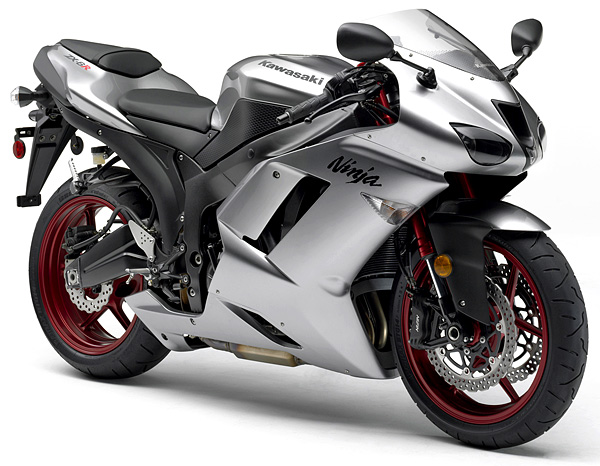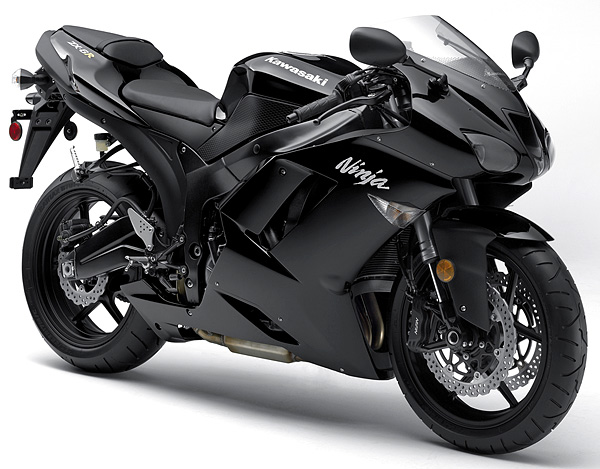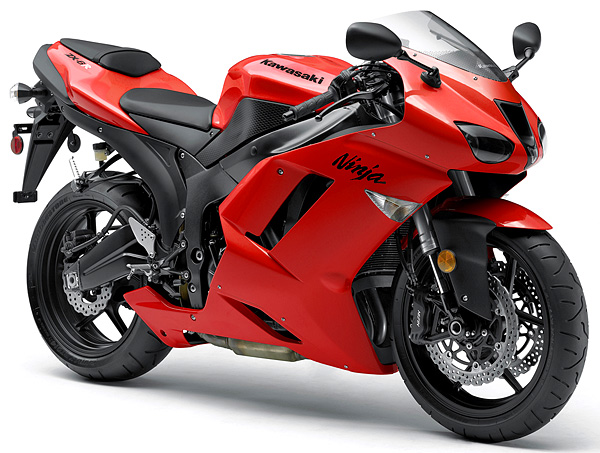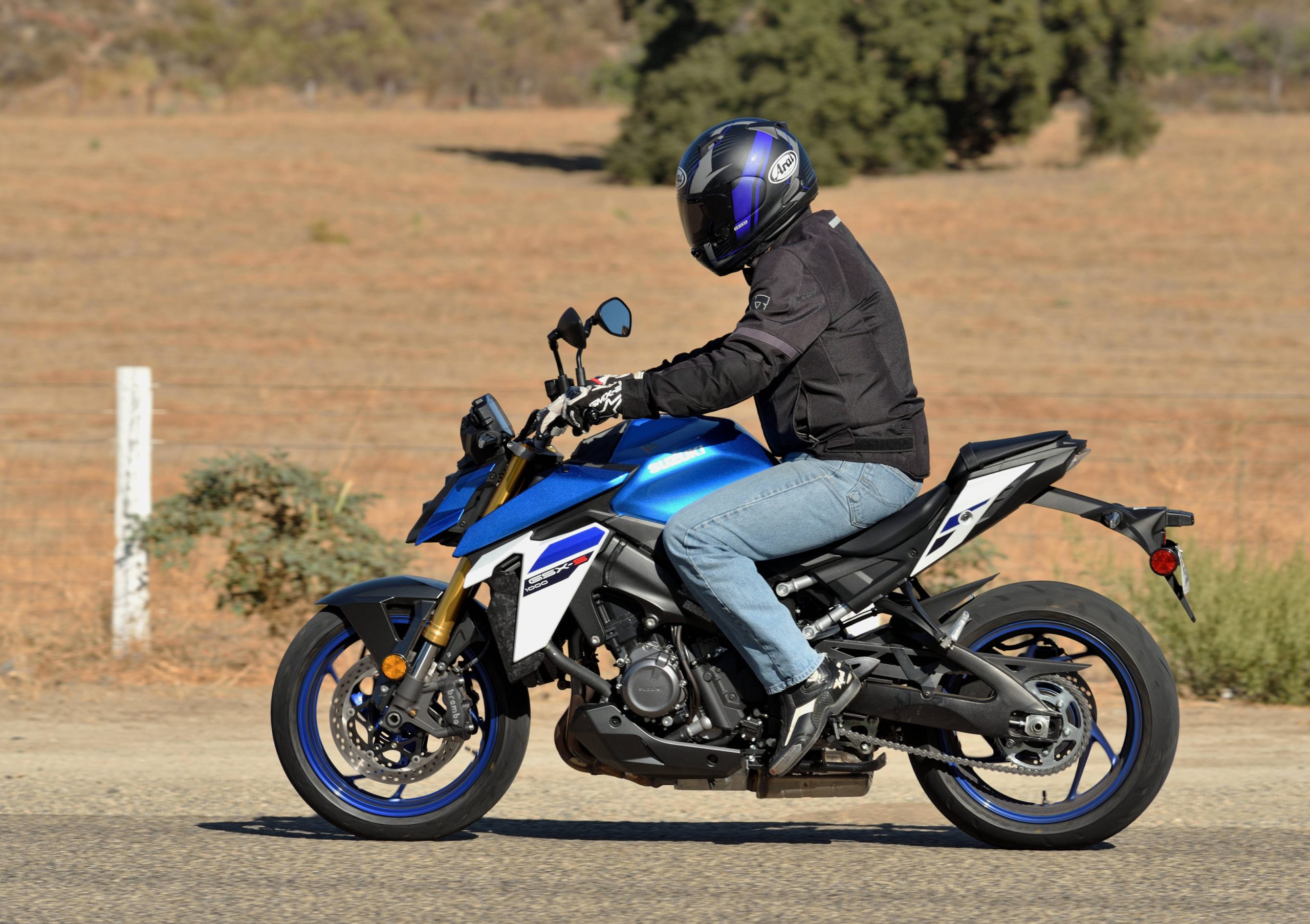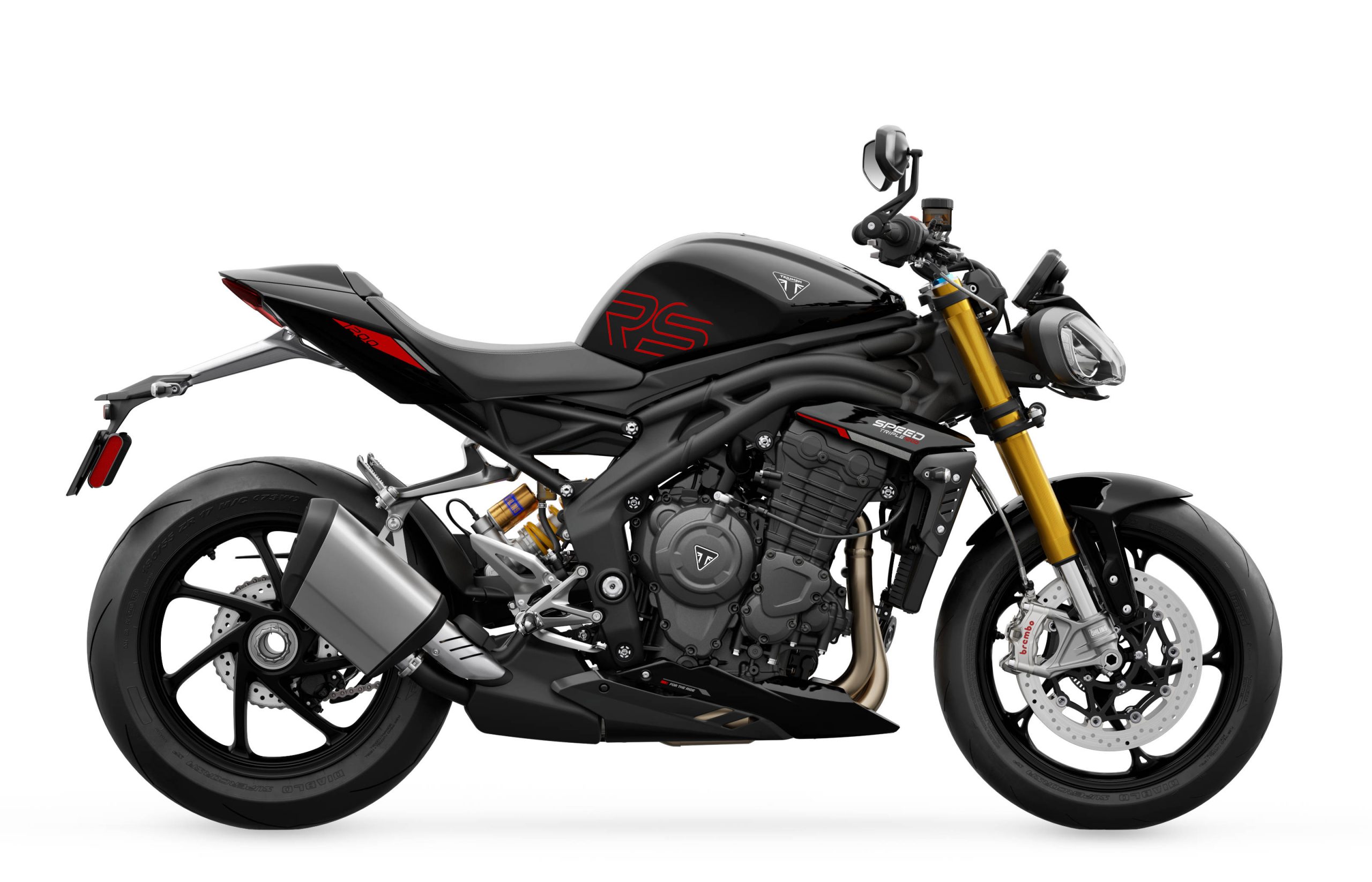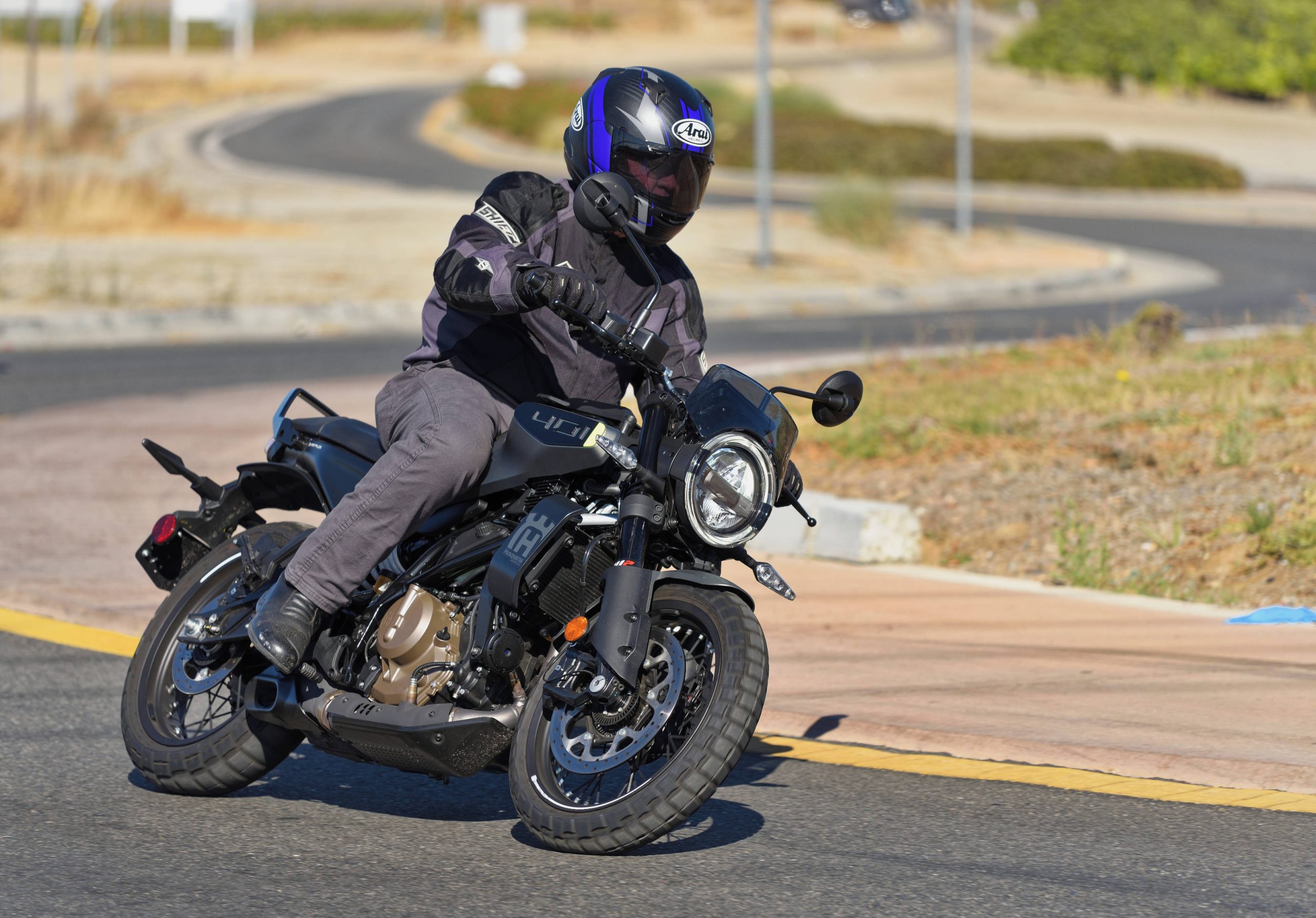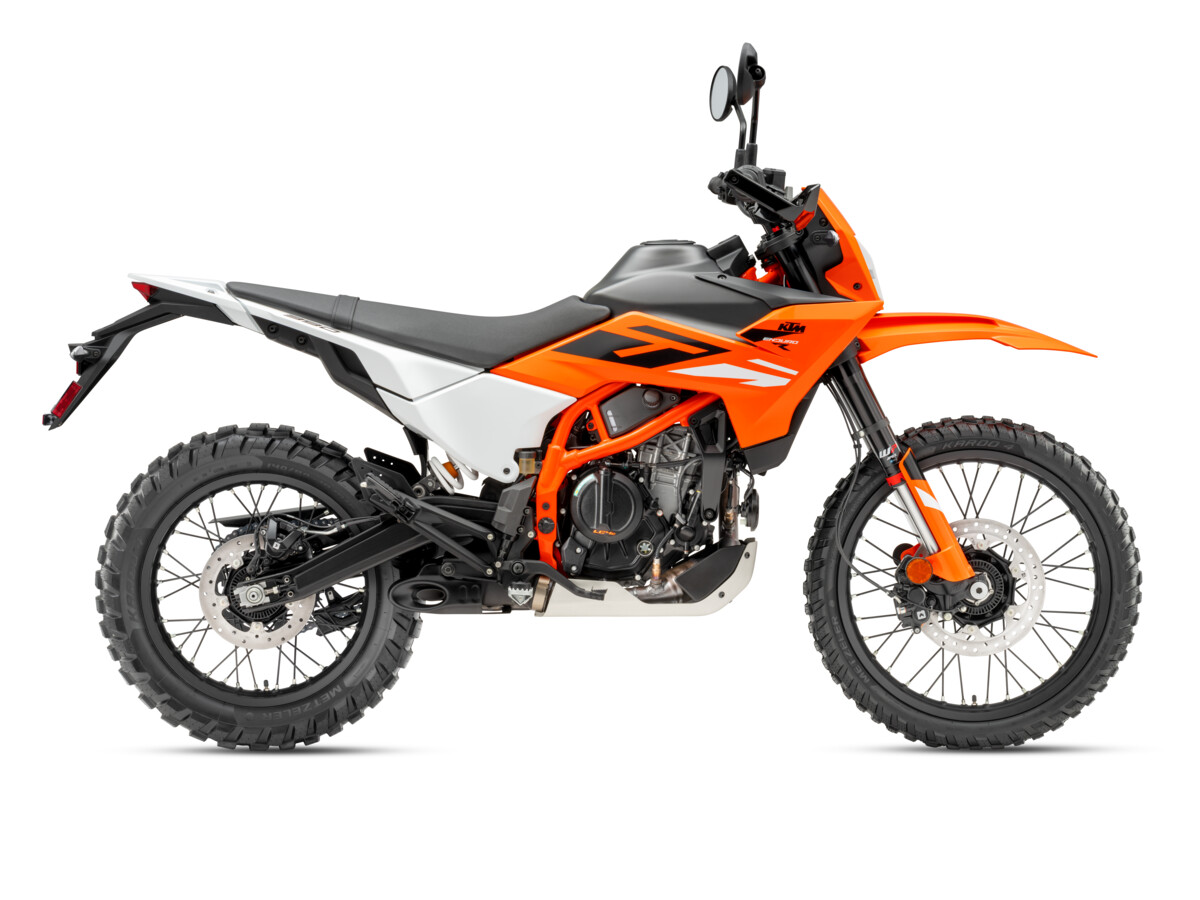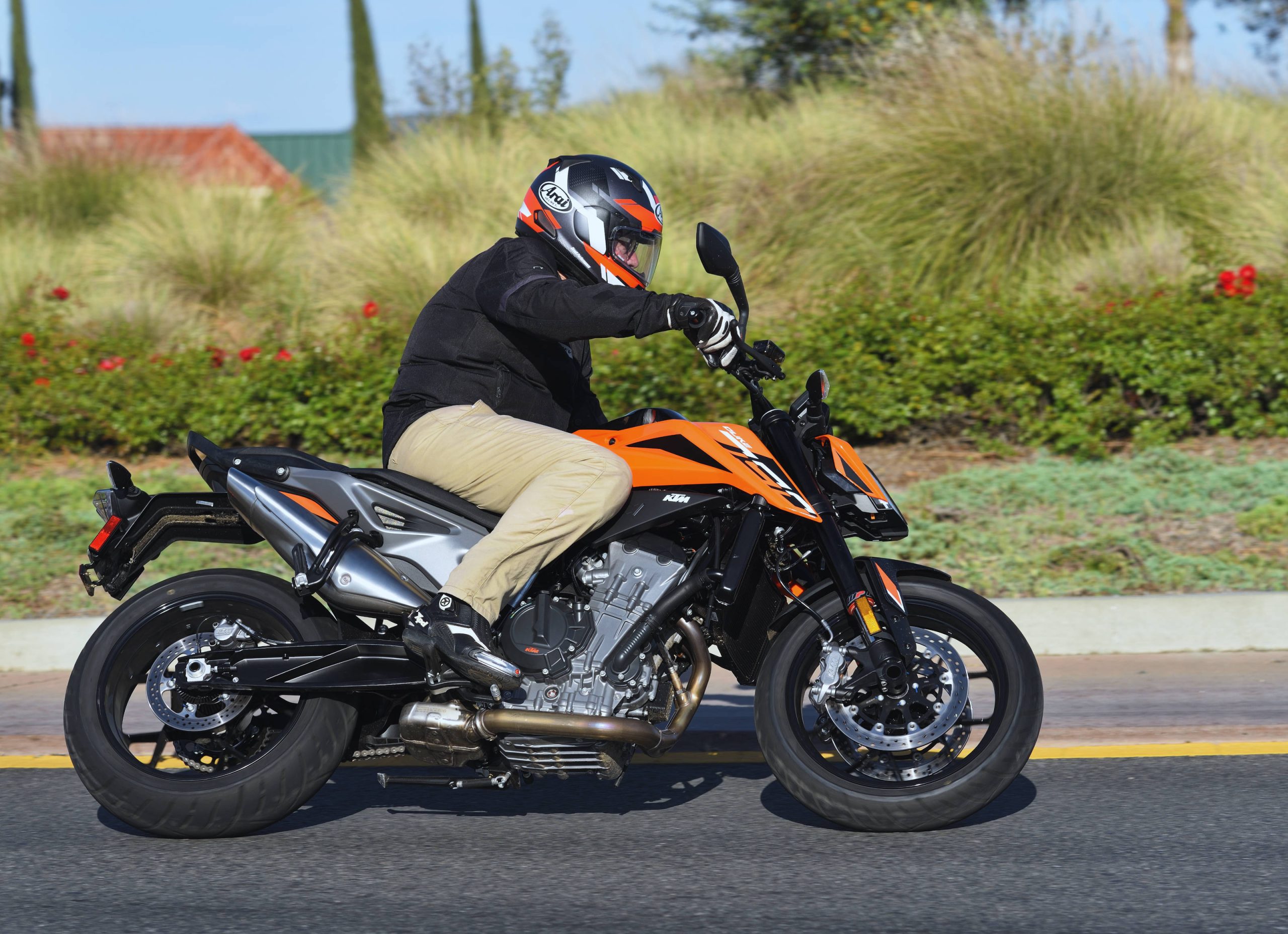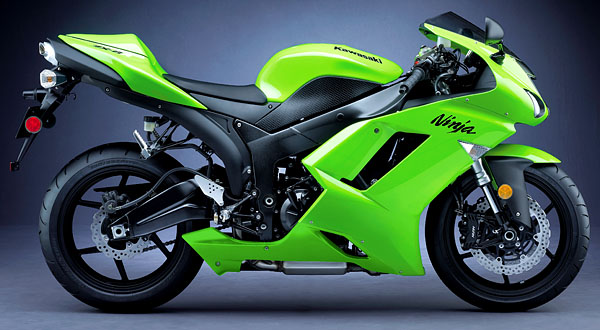
After several years of offering their 636cc ZX-6R for street use, and an entirely seperate 599cc machine, dubbed the ZX-6RR, for displacement-restricted racing classes, Kawasaki will offer only one ZX-6R for 2007, and it will displace 599cc.
The new machine was designed from the ground up to follow Kawasaki’s ‘Power, Performance, Exhilaration’ motto, and judging from the specs, it will be as focused on racetrack performance as any supersport class machine we have seen yet – perhaps even more so. In fact, one of the first things mentioned in Kawasaki’s media kit is that the chief development rider of the new ZX-6R is a former 125cc GP racer, which Kawasaki claims has resulted in “an all-new 600 capable of cornering speeds previously unknown to the middleweight class”.
Just like Honda did with their new CBR600RR, Kawasaki’s design team started with the ZX-6R’s heart: the motor. While it features an identical 67mm bore and 42.5mm stroke to the current ZX-6RR engine, the new powerplant is significantly smaller – Kawasaki says “about 40mm(1.57in) smaller in both width and length”. The compact setup “uses a tri-axis crankshaft and transmission shaft layout to optimize the engine’s center of gravity”.
The new engine isn’t just a smaller version of the old motor, however. Far from it, in fact – the new powerplant was designed from the ground up with a focus on extreme mid-range torque, while still providing superb top-end acceleration, as well as possessing a large over-rev area to allow the rider to make fewer shifts while circulating the track. Computerized flow analysis helped Kawasaki’s engineer’s design extremely efficient intake ports, and this technique was also applied to the engine’s internal coolant passages to maximize cooling efficiency (an important aspect of power production in a high-revving, high compression naturally aspirated powerplant). Aluminum valve spring retainers and lightweight forged pistons contribute to the 6R’s high-rpm capability, and the new valvetrain is more compact, reducing the cylinder head’s overall height.
The engine’s peripheral systems are new as well. On the intake side, smaller diameter throttle bodies contribute to increased midrange torque, while their shorter length is claimed to improve over-rev characteristics. Post-combustion, exhaust gasses will exit via a new exhaust system which uses a ‘pre-chamber’ located centrally below the engine, which allowed Kawasaki to make the underseat muffler shorter, smaller, and significantly lighter than last year’s version – all of which contributes significantly towards the company’s design philosophy of mass centralization. A new high-speed, 32-bit ECU controls new injectors which more finely atomize the fuel, for more efficient combustion.
Power is transmitted from the crankshaft to the rear tire via a new six-speed, cassette-type transmission featuring close ratios for better acceleration. Although few owners are likely to take advantage of the “easier trackside ratio changes” offered by the “racing-style gear stack”, it will certainly benefit the efforts of Kawasaki’s factory-supported Supersport racing teams. Even average riders, however, will benefit from the factory slipper clutch, which is likely to be one of the finest available, at least if it follows the pattern set by the slipper clutches fitted to previous Kawasaki supersport machines. Fitted to the new transmission is a gear position sensor, which displays the selected gear on the new electronic gauge cluster.
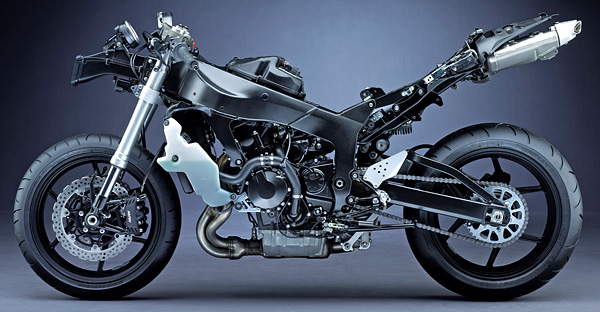
Cradling the new powerplant is a similarly all-new twin spar aluminum perimeter frame, which combines pressed and cast aluminum components to keep frame weight to a minimum and optimize rigidity. The compact frame and engine allowed the designers to fit a longer swingarm, which is suspended by means of a revised Uni-Track rear suspension system. The new Uni-Track setup uses a “pillow-ball” (spherical bearing) upper mount in place of the previous bushings, which is claimed to give “a more direct feel and improved feedback”. In addition to adjustability for preload, compression damping, and rebound damping, the ZX-6R also comes with 1mm shims which are inserted at the upper shock mount to adjust rear ride height. Finally, the rear shock features a “top-out spring”, which is claimed to improve “the rear wheel’s ability to follow the road surface when the rear end is light due to hard braking”.
Up front, the new ZX-6R features new 41mm inverted cartridge forks, which also feature “top-out springs”. New four-piston, four-pad brake calipers are radially-mounted to the bottom of each fork leg, clamping dual 300mm rotors featuring Kawasaki’s signature “petal” shape. As with the rear shock, the front forks are fully adjustable for preload, compression damping, and rebound damping.
These all-new hard parts are wrapped in completely redesigned bodywork, which Kawasaki says makes the new ZX-6R “the most aerodynamically efficient of any Ninja sportbike available today”. New projector-beam headlights are lighter and more compact, and they sit on either side of a centrally mounted ram-air duct which Kawasaki claims is “small but highly efficient”. The more compact front fairing contributes to a smaller frontal area for less drag. This trend continues out back, where the aforementioned smaller underseat muffler allows a slimmer, cleaner tail-section design, which is claimed to similarly reduce drag. The language of Kawasaki’s press release indicates an aggressive riding position, and the fuel tank is slimmer to make it easier for the rider to grip the bike with his legs.
Keep your eyes on Motorcycle Daily for an ‘MD First Ride’ test of the all-new 2007 ZX-6R as soon as we can get our hands on one!
